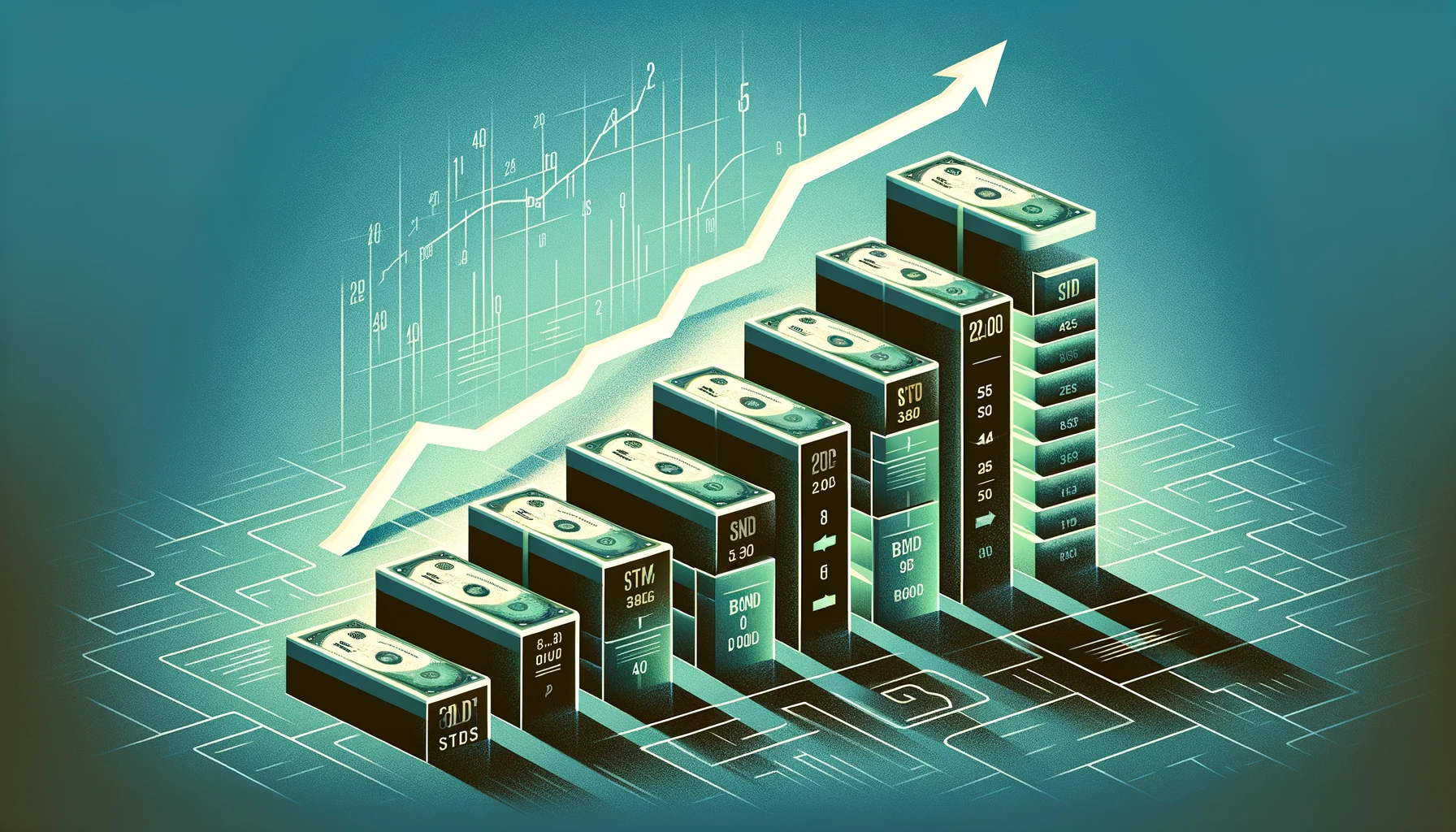When analyzing dividend safety for dividend-paying stocks, it is crucial to focus on the right financial indicators. A trend has emerged where free cash flow metrics supplant corporate earnings reports as a more reliable gauge of dividend financial health. In this article, we delve into the nuances of earnings vs. cash flow and explain why investors should prioritize cash flow metrics in their financial statement analysis of cash dividends.
Understanding the fundamental difference between earnings quality and cash flow-informed investing strategies empowers investors to make well-informed decisions and accurately assess dividend-paying companies for long-term stability and growth potential.
Key Takeaways
- Free cash flow metrics are more reliable indicators of dividend safety compared to earnings reports.
- Dividend policy adjustments are driven more by shifts in cash-flow volatility than by predictions of future earnings.
- An analysis of cash flow statements, particularly the dividend coverage ratio, offers valuable insights into dividend reliability and sustainability.
- Evaluating dividend stocks requires a focus on free cash flow instead of net income, as the former is less susceptible to accounting manipulations and presents a more accurate representation of a company’s financial strength.
- Consistent and stable free cash flow is vital to a company’s ability to maintain and grow its dividend distributions, ultimately contributing to more attractive and resilient investments.
Understanding Dividend Safety and Shareholder Returns
In the realm of dividend investing, understanding the factors that contribute to dividend safety is crucial for maximizing shareholder returns. To gain insight into this subject, let us examine the connection between dividend adjustments and cash-flow volatility, as well as the implications of this relationship for investors.
When companies announce changes to their dividend policies, these decisions often signal upcoming shifts in their cash-flow volatility. By adjusting dividends, managers aim to communicate to investors the level of uncertainty surrounding their future cash flows. This signaling effect is evident in the fact that larger dividend increases tend to coincide with more significant reductions in cash-flow volatility, leading to larger positive market responses. In turn, this process influences shareholder returns.
Empirical evidence demonstrates that dividend changes herald shifts in cash-flow volatility and, ultimately, have an impact on shareholder returns.

For a comprehensive dividend yield analysis, investors should perform a thorough examination of various factors. Key aspects to consider include:
- Retained earnings
- Sustainable dividend yields
- Investing for cash flow
- Dividend growth investing
Let us take a deeper look at these elements:
| Factor | Description |
|---|---|
| Retained Earnings | These represent the portion of net income that a company retains after paying dividends to shareholders. A higher retained earnings figure indicates the company’s ability to reinvest in its business and support future dividend growth. |
| Sustainable Dividend Yields | A sustainable dividend yield is one that can be easily maintained by the company, given its cash flow and earnings situation. Higher sustainable yields are more desirable for investors who seek reliable income streams. |
| Investing for Cash Flow | Investors focused on cash flow aim to invest in companies with strong, consistent cash flows that support their dividend payments. These firms are more likely to have a lower risk of dividend cuts or omissions. |
| Dividend Growth Investing | This is an investment strategy that targets companies that consistently raise their dividends over time. Dividend growth investing allows investors to capitalize on compound returns and potentially benefit from long-term stock price appreciation. |
In conclusion, understanding dividend safety and the factors affecting it is critical for investors seeking to maximize their shareholder returns. By analyzing cash-flow volatility and the signaling effect of dividend adjustments, investors can glean important insights into the potential future performance of their dividend-paying investments.
The Role of Free Cash Flow in Assessing Dividend Reliability
Although many investors consider earnings as a primary criterion for evaluating dividend stocks, the role of free cash flow is better suited for assessing dividend reliability. In this section, we will elaborate on the difference between earnings and free cash flow reliability, the significance of free cash flow metrics, and how analyzing cash flow statements can lead to a strategic dividend coverage ratio analysis.
Comparing Free Cash Flow and Earnings in Dividend Analysis
When examining the sustainability of dividends, it is prudent to look beyond traditional earnings. Unlike earnings, free cash flow is less susceptible to earnings manipulation and accounts for the capital expenditures impact on a company’s financial health. As changes in dividends are primarily associated with shifts in cash-flow volatility and not consistently paired with subsequent variations in earnings, free cash flow presents a more dependable metric to assess dividend reliability.
Free Cash Flow Metrics: The Gateway to Sustainable Dividends
Stable or improving cash flows serve as a robust indicator of sustainable dividends. An in-depth analysis of free cash flow metrics is crucial in determining a company’s ability to maintain or increase dividends without compromising future growth potential or financial health. Investors should focus on relevant cash flow measurements, such as free cash flow to equity, free cash flow to the firm, and operating cash flow for better insight into the dividend-paying capacity of a company.
Cash Flow Statements: A Closer Look at Dividend Coverage Ratio
A comprehensive examination of a company’s cash flow statements enables investors to assess the dividend coverage ratio accurately. This crucial indicator compares the free cash flow generated by a company’s operations to its dividend payments and provides valuable information about the company’s ability to cover dividend distributions.
The dividend coverage ratio offers a tangible measure of dividend safety, calculated as:
Dividend Coverage Ratio = Free Cash Flow / Total Dividends Paid
A higher dividend coverage ratio indicates a more secure and reliable dividend, while a lower ratio suggests potential risks in the company’s ability to maintain its dividend payments.
Investing in stocks with a strong dividend coverage ratio provides a chance for positive cash flow investments and long-term sustainability of dividends, positively impacting the overall stock market valuation.
In conclusion, understanding the role of free cash flow in assessing dividend reliability is paramount for investors. A company with robust cash flows and a healthy dividend coverage ratio is more likely to deliver reliable dividends, significantly increasing the attractiveness of its stock. So, incorporating free cash flow analysis and dividend coverage ratio assessment into your investment strategy can result in more informed decision making and better investment outcomes.
Evaluation of Dividend Stocks: Beyond Net Income
When evaluating dividend stocks, it is imperative to look beyond mere net income figures, which can be affected by non-cash charges and manipulated through accounting practices. Free cash flow provides a more truthful reflection of the company’s financial ability to sustain and grow dividends, thereby offering a more comprehensive evaluation of a stock’s dividend quality. In this section, we will delve deeper into the differences between net income and cash flow, and explore the importance of free cash flow analysis when evaluating dividend stocks.
| Factor | Net Income | Free Cash Flow |
|---|---|---|
| Definition | Income earned after factoring in expenses and taxes | Operating cash flow minus capital expenditures |
| Implications | Can be impacted by accounting practices, making it less reliable for dividend evaluation | Provides a more accurate picture of the company’s ability to pay and grow dividends |
| Analysis | Conventional method, may not provide a complete picture of dividend quality | Essential for comprehensive dividend stock evaluation |
We can further emphasize the importance of cash flow analysis by looking at the dividend per share calculation. This calculation, which divides total dividends paid by the number of outstanding shares, can be misleading when used alone, as it does not take into account the company’s ability to generate the cash needed to cover its dividends.
“Free cash flow is a better indicator of a company’s ability to pay and grow dividends, as compared to net income.” – Renowned dividend investing expert.
- Understand the difference between net income and free cash flow, and how they impact stock evaluation.
- Focus on analysis of free cash flow for a more accurate assessment of dividend quality.
- Look beyond traditional measures like dividend per share calculation, exploring factors like dividend coverage ratio and free cash flow yield.
In conclusion, a thorough dividend stock evaluation must involve a comprehensive cash flow analysis, focusing on free cash flow instead of net income. This approach ensures a more transparent assessment of a company’s ability to sustain and grow dividends, helping investors make more informed decisions and ultimately maximize their returns.
Conclusion: Free Cash Flow—The Nexus of Dividend Solvency and Growth
In the realm of dividend investing, free cash flow stands out as the essential connection between dividend solvency and growth potential. Understanding and analyzing the generation of free cash flow allows investors to gauge a company’s ability to cover and potentially increase its dividends, establishing it as the foundation of a robust and sound dividend policy.
Free cash flow yield, leveraged free cash flow, owner earnings for dividends, and adjusted free cash flow are just a few key metrics that offer insights into the long-term dividend sustainability of a firm. Employing predictive cash flow models helps investors evaluate the stability of dividend income and identify opportunities for total return on dividends.
Ultimately, the stability of free cash flow across various economic conditions highlights its significance in fostering resilient and potentially growing dividend yields. As investors, it is crucial for us to recognize the primary role of free cash flow in securing and enhancing long-term returns within dividend investing strategies.
Source Links
- https://www.sciencedirect.com/science/article/abs/pii/S0304405X20302415
- http://arno.uvt.nl/show.cgi?fid=134569
- https://bin.ssec.wisc.edu/ABI/kaba/REIT/ch8.pdf

Dr. Lincoln C. Wood teaches at the University of Otago in New Zealand. He is an avid investor and educator. He loves cash flow, income, and dividends when investing. He likes to buy undervalued companies with strong advantages and earnings growth.







